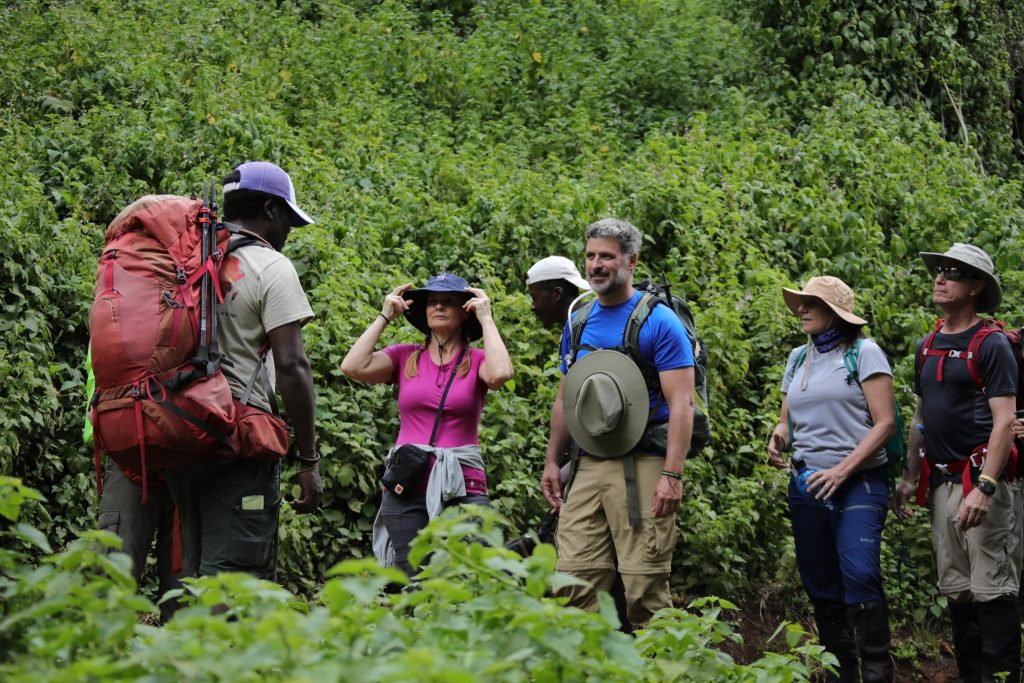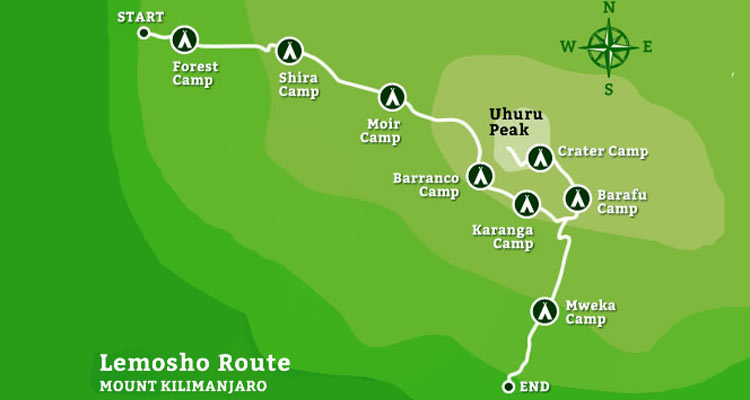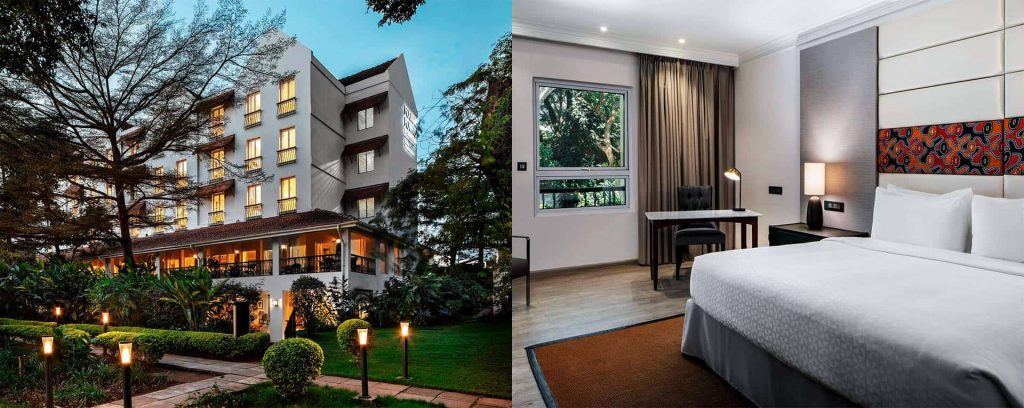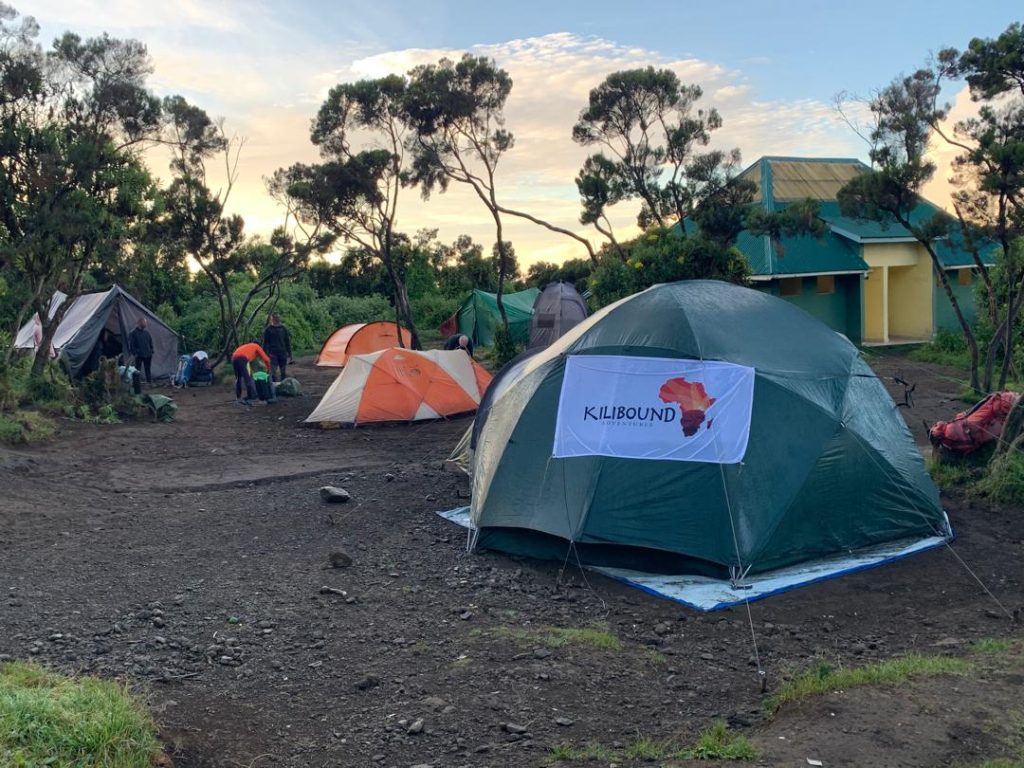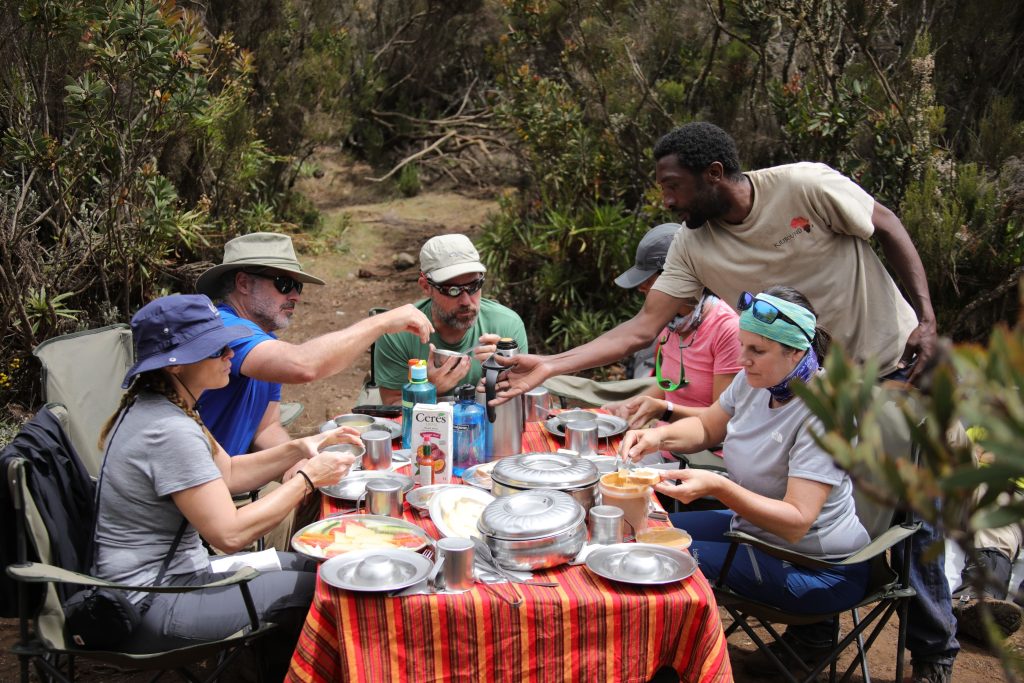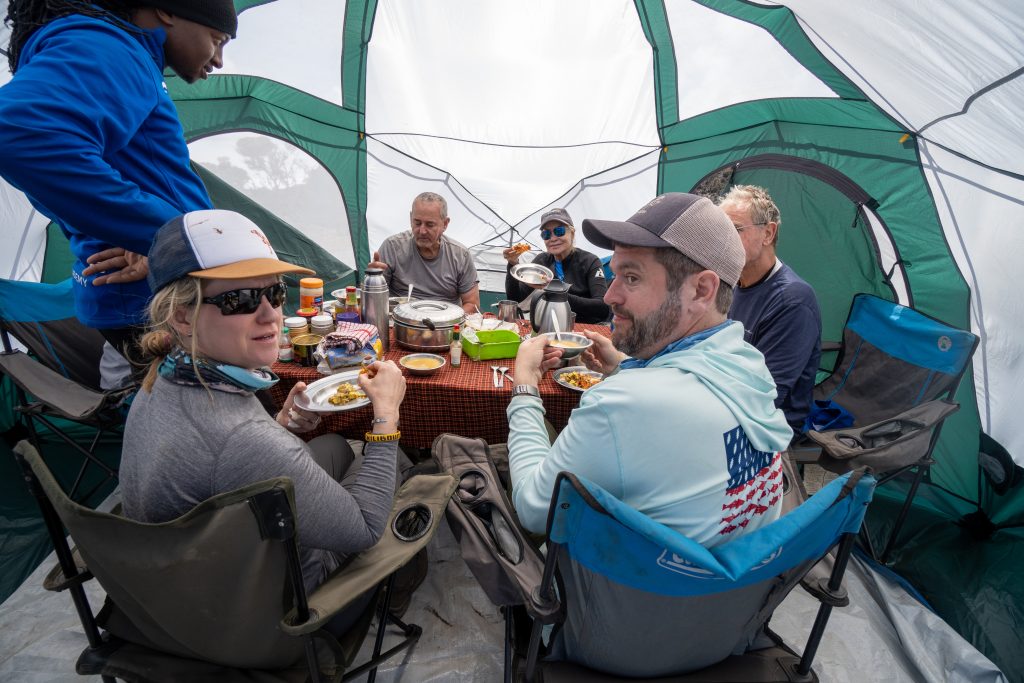9 DAYS LEMOSHO ROUTE KILIMANJARO CLIMB
- OVERVIEW
- DAY BY DAY ITINERARY
- FAQ
- ACCOMODATION
- DATE AND PRICING
The 9-day Lemosho Route is the ultimate trek for those seeking a scenic, less crowded, and highly successful ascent of Mount Kilimanjaro. Known for its gradual acclimatization profile, this route offers breathtaking landscapes, from lush rainforests and alpine meadows to the dramatic high-altitude desert and the glacier-capped summit of Uhuru Peak (5,895m).When climbing Mount Kilimanjaro with Kilibound Adventures, the Lemosho Route is widely considered to be the best route for Mount Kilimanjaro climb. It combines all the best feature of the Machame route in terms of success rate but by starting a further round to the West it takes you up and over the spectacular Shira Plateau and at the same time avoids the crowds on the early part of the Machame route Over 8 days, you have a fantastic journey and a great chance of summiting successfully 9 Days lemosho route Kilimanjaro Climb .Accommodation is in tents which the porters will pitch for you. You will need a sleeping bag, warm clothes and walking poles. This is a steep, tough trek within the limits of a fit individual used to walking in mountain areas. The route can also be used to get onto the Western Breach for those who want to challenge themselves with an ‘extreme’ adventure. You are accompanied by an armed ranger on the first day, as the forests around the Lemosho Glades are rich in buffalo, elephant and other big game animals.
Highlights:
- Scenic & Remote: Begins on the western side of Kilimanjaro, offering stunning views and a peaceful trek through untouched wilderness.
- High Success Rate: The extended itinerary allows for better acclimatization, increasing summit success.
- Diverse Landscapes: Experience multiple ecological zones, from dense rainforests to rugged alpine terrain.
- Wildlife Encounters: Spot colobus monkeys, antelopes, and unique bird species in the lower elevations.
- Sunrise at Uhuru Peak: Witness a once-in-a-lifetime sunrise from Africa’s highest point.
This 9-day trek is perfect for adventure seekers looking for a challenging yet rewarding experience with ample time for acclimatization, making it one of the best routes to conquer Kilimanjaro.
Our Kilimanjaro adventure with Kilibound Adventures starts the Moment you land at Kilimanjaro international Airport, You will be met by our staff at the airport and transferred to Arusha in the peaceful surrounds of our comfortable pre and post trek accommodation in Arusha from where there are great views of the mountain. You can relax by the pool before your briefing with the Guides, who will provide the essential information for your Kilimanjaro Climb to the roof of Africa.
DAY 1: HOTEL to FOREST CAMP (9,500 feet, 3-4 hours, 4 miles)
Enjoy a healthy breakfast at the hotel and start drinking water right away! If you have extra luggage that you are not going to take with you on the mountain you may leave it with the hotel. Just inform the front desk and they will take care of it for you.
After breakfast, our guide Gideon will pick you up and you will head to the Londorossi gate to complete the necessary paperwork at the park office ready for Kilimanjaro Climb . Another hour on a muddy, slippery road, and you reach the starting point at Lemosho where your porters have been since the night before organizing your gear. Here you meet your amazing Kilibound staff members and enjoy your first lunch on the mountain before hitting the trail.
Once you get started the walk is beautiful and the pace is slow to assist with acclimatization. The guides will stop frequently to point out interesting plants and you will take your time to stop and admire the flora and fauna this region of Kili presents. Keep your eyes on the trees and watch for the Colobus monkeys that are frequently seen in this section of rainforest
This section of the trail can be slippery so walk carefully. Wearing gaiters during this leg of the trail helps keep your pants clean and helps you avoid the stinging nettle plants. Safari ants also cross your path on occasion and you must be careful to avoid them as their bites burn. Today’s climb is mildly strenuous as some of the downhill and uphill stretches are steep so hiking poles are helpful to prevent you from slipping and sliding.
The forest is very beautiful in this region so take lots of pictures. You arrive at Forest Camp a few hours after you started, and camp for the night at 9,220 feet. When you arrive at camp your tents will be set up for you and you will have an hour or so to relax and organize your items in your tent before dinner.
Tonight you must eat well. At higher altitudes you will begin to lose your appetite, so during the first few days it is important to eat well to maintain your energy resources. You must continue to drink water – try to drink at least another liter of water before going to bed. Darkness comes early in the forest so enjoy the sounds of the forest and your first night on the slopes of Kilimanjaro!
DAY 2: FOREST CAMP to SHIRA CAMP (11,500 feet, 5-6 hours, 5 miles)
A porter wakes you up in the morning with a cheerful good morning and delivers an assortment of hot drinks. Morning time is cold but it heats up quickly with the sunrise. Breakfast is served inside the mess tent or outside when it’s warm enough. Before breakfast you dress for the day (your guide will tell you the night before how to dress for the day’s hike), roll up your sleeping bags, pack your duffel bags, and prepare your day back. After breakfast and refilling your water bottles, it is time to head on to the next leg of the trail.
The hike from Forest Camp to our lunch stop is easy and offer beautiful views when it is clear out. After lunch, the hike will be uphill for a few long, steep stretches until we arrive at Shira Ridge. The last hour is an easy stroll across the plateau- at this point you have left the rainforest and entered into the heather zone. The heather zone offers a new array of plants and grasses, and great views of the trail ahead of you and behind you when it is clear. It is important to wear sunscreen here as there is less overhead cover.
Once you arrive at camp you may get to see the peak of Kibo for the first time if it is clear! If not, you are sure to catch a glimpse in the morning. From Shira camp at 11,500 feet we can see the Western Breach from a distance. It’s time to relax and enjoy dinner and good company before settling in for the night.
DAY 3: SHIRA CAMP to MOIR CAMP (13,800 feet, 5-7 hours, 8 miles)
This morning after your wake up call and breakfast, you set out with our guides while our porters stay behind to pack up your tents and the rest of your gear. Amazingly, within the next hour or so they will catch up to you and pass you, heading on to set up lunch and camp. The guides will educate you about symptoms of altitude sickness, and maintain constant contact with the porters in the event that a climber needs additional assistance.
Today’s hike is shorter with two steep sections, one before lunch and one after lunch. The Shira Plateau is beautiful and contains many interesting rock formations, streams, and plant life. If the morning is clear you can see the sun rise behind Kibo, and will have a beautiful view of the peak for the rest of the day. Most of the trail today is flat, providing a pleasant walk. You will be hiking at 11,500 feet – most climbers do not have difficulty at this altitude.
This area of the mountain is well known for elephant and buffalo during the Kilimanjaro Climb, so your guide will be on the lookout for fresh tracks. Soon you will cross into the moorland and the lava ridges of Kilimanjaro will appear in front of you.
You eat lunch at 12,230 feet. After your lunch stop you have another 2-3 hours of hiking in front of you. The afternoon section of the hike is very scenic and features exotic trees and plants, caves, and dramatic rock overhangs.
You will stop for the night at Moir Camp at 13,800 feet. Before dinner you have an opportunity to shower and relax. You may experience some symptoms of altitude discomfort such as a headache or fatigue at this altitude
– no matter what, keep drinking lots of water and eat up at dinner time! You will appreciate changing out of your boots in the afternoon into your camp shoes, and you can hang any wet clothes up in your tent to dry.
DAY 4: MOIR CAMP to BARRANCO CAMP (13,050 feet, 5-6 hours, 4 miles)
This morning try to drink a liter of water before you leave camp. Today’s hike is long and you will reach an altitude of almost 15,000 feet. You will start with a long steep section, which when combined with the altitude can be a challenge. The climb does get easier during the day and as the sun rises you will have stunning views where you can see the trail ahead of you. After an hour or so, Mount Meru appears in the distance. This part of the trail is especially beautiful as most trekkers do not take this route, so it is largely unspoiled from tourist traffic.
Today you enter into the alpine zone. Plant life here consists mostly of mosses and lichens, as the climate in this area is harsh and it freezes nightly. This part of the trail can be dusty so bandanas and wet wipes are handy. On your way up the next steep stretch of the trail, you can view the Lava Tower through your binoculars along with a long stream of porters and trekkers heading towards the tower. You will reach the Lava Tower around noon and will be at the highest point of today’s walk, 14,850 feet. If you have the energy and the visibility is good, you may try the 30 minute climb up the tower – you will find amazing views from the top!
After lunch you will hike almost entirely downhill to your next camp. It can be steep in areas and your hiking poles will be helpful to steady yourself. Walk carefully and pay attention- this is not the time to hurt an ankle or a knee! You will reach Barranco Camp at 4pm and will be camping at over 13,000 feet. Hiking to a high altitude and then hiking back down to a lower altitude helps us with the acclimatization process. This campsite is beautiful, and the dramatic Barranco Wall looms large to the side. Once you start to reach about 14,000 feet it will be quite cold at night time, and you will be happy that you invested in some proper gear!
DAY 5: BARRANCO CAMP to KARANGA VALLEY CAMP (13,700 feet, 4-5 hours, 3 miles)
This morning, as you continue to climb higher and higher, try again to drink a liter of water before leaving camp. Today’s hike to Karanga Valley is short but it is crucial in our acclimatization process. Some hikers bypass Karanga and head straight for Barafu Camp- taking this extra day is critical in our acclimatization process, and is a nice day of rest in preparation for our final two days of climbing before the summit.
Just north of camp we cross a small stream before starting the long scramble to the top of the Barranco Wall. From the bottom you can watch hikers make their way up the long scramble, and it looks more intense than it really is. It takes about 75 minutes to reach the top of the wall, and your guides will be there to help you as this section features some large steps up and scrambling over large rocks. We will have plenty of opportunities for rest, and the view from the wall is beautiful for taking pictures of the valley. Soon Barranco Camp will be just a small dot in the distance.
Enjoy a breathtaking view from the top of the wall when the weather is clear! After summiting the wall, you will cross a series of hills and valleys until you descend sharply into a valley with several water streams. The final hill is very steep. You overnight at Karanga Valley Camp. This afternoon you will have lots of time to rest, relax, nap, and save your energy for the next two days.
DAY 6: KARANGA VALLEY CAMP to BARAFU/KOSOVO CAMP (15,300 feet, 4-5 hours, 2 miles)
Today is a short hike, but you will be glad that you have been eating all of the carbohydrate-filled dinners provided and drinking so much water, as today we camp at over 15,000 feet. Kilimanjaro is not the place to start a diet! You start out steep on your hike today and climb uphill across a barren landscape with lots of boulders and shattered rocks. It is very quiet and peaceful on this section of the hike, and The Decken Glacier is present to your left.
Soon you are looking across a valley towards Barafu or Kosovo Camp in the distance. After a slow hike up the final hill, you reach a fork in the trail – the way down to Mweka is to the right, but we follow the trail to the left, climbing up a rocky section for some more scrambling. 20 minutes later you reach your camp amidst large rocks with dangerous cliff faces. On some occasions, the group along with the head guide may decide to hike on for another short while to Kosovo camp. Kosovo camp is often less crowded than Barafu, and puts us almost an hour closer to the summit.
Tonight most other climbers will go to bed early (7pm) and wake up at 11pm to start their 12-18 hour summit to the top and back down again to camp. You will use this time to rest, and begin your summit first thing in the morning, a much more comfortable way to reach the summit area!
DAY 7: BARAFU/KOSOVO CAMP to SUMMIT (19,340 feet, 6-8 hours, 3 miles) to BARAFU CAMP (15,300 feet, 2-3 hours, 2 miles)
Today you hike about 3.5 miles going from an altitude of 15,300 feet to 19,340 feet. Today is the reason you are taking this climb, and it will be difficult but well worth the struggle! Dig deep – your porters and fellow climbers are there to help you. The hike is mostly uphill and will take 6-8 hours, including a break for lunch.
Climbing the last stretch to the Crater Rim will not be easy, but continue to hike slowly as your guides have taught you, dig deep, and keep going! You start early today, between 5- 6 am, and start with some light scrambling over rocks. After an hour or so the rocks give way to gravel and scree and you will continue traversing along for 4 hours. Along the way you may stop for pictures and plenty of rest and water breaks.
Around 1pm you will find yourself just below Stella Point where we will have lunch at 18,472 feet. After lunch negotiates the loose scree towards the Stella Point ridge – this can be a challenge as the scree may causes you to slide backwards slightly with each step. Soon you will reach the boulders of Stella Point, and have been hiking 5-7 hours at this point.
By now you have passed many climbers who are on their way back down the mountain after their early morning summit attempts. After lunch you hike another 2-3 hours on a steady uphill climb to pass Stella Point and move on to the summit. At this time of day the most hikers have already summited and are hiking back down to their camps – leaving you with the summit mostly to yourselves! Rest at the top, enjoy the view, savor the moment, and take lots of pictures. After your Kilimanjaro Climb summit celebration, begin the steep climb down to Barafu Camp.
DAY 8: BARAFU CAMP to MWEKA CAMP (10,065 feet, 4-6 hours, 7 miles)
After an exciting previous day, a cold, cold night, and beautiful scenery, you will rise early to head down to Mweka Camp. After sleeping at such high altitude, you may not feel well and will be ready to head back down. Always remember to keep your guide up to date on how you are feeling! The way back down the mountain is very steep, and you may be quite sore by now from days of hiking – use of hiking poles is recommended. Dress in layers today as you will descend quickly and will get a nice sweaty workout today.
You will be thankful for the luxury of a shower tonight! Tonight you celebrate our success for Kilimanjaro Climb together, but sadly it is your last night camping on the slopes of Kilimanjaro. If you have any used gear that you would like to leave behind for the porters before our Kilimanjaro Climb ends, let your guide know tonight.
DAY 9: MWEKA CAMP to THE PARK GATE (3-4 hours, 6 miles) & TRANSPORT FROM ARUSHA to AIRPORT
After breakfast today you will present your staff with any used hiking gear that you have chosen to donate and you may also give a few extra personal tips to staff who served you exceptionally. After your ceremonies, you hike steeply downhill back through the rainforest to the park gate. Again, the trail here can be muddy and slippery. Enjoy the beauty of the rainforest and your last few hours on the mountainside. When you arrive at the gate you are greeted with snacks and an opportunity to buy a few souvenirs. You officially sign the registry and gather for the presentation of certificates by your guides. And this will be the end of our Kilimanjaro Climb with Kilibound Adventures.
– The Lemosho Route is one of the most scenic and least crowded paths to the summit of Mount Kilimanjaro. It begins on the western side of the mountain and offers a gradual ascent, providing ample time for acclimatization, which increases the chances of reaching the summit.
2. Why choose the Lemosho Route for Kilimanjaro?
– The Lemosho Route is favored for its beautiful scenery, diverse landscapes, and quieter trails. The longer 9-day itinerary provides more time to acclimatize, which significantly improves summit success rates compared to shorter routes.
3. How long does it take to complete the Lemosho Route?
– The Lemosho Route takes 8 to 9 days to complete, depending on the chosen itinerary. The extra day for acclimatization helps to reduce altitude sickness risks and improves the chances of reaching the summit.
4. What is the difficulty level of the Lemosho Route?
– The Lemosho Route is considered moderate in difficulty. While the route itself is not technically challenging, the main difficulty lies in the altitude. The longer duration allows for better acclimatization, making it easier to handle the higher altitudes.
5. What is the best time to trek the Lemosho Route?
– The best times to trek Kilimanjaro via the Lemosho Route are during the dry seasons, which are from **January to March** and **June to October**. These months offer the clearest weather and less rain, improving visibility and the overall experience.
6. What is the success rate for reaching the summit on the Lemosho Route?
– The success rate for reaching the summit on the Lemosho Route is generally higher compared to other routes, especially if the full 9-day itinerary is followed. With more time for acclimatization, trekkers have a better chance of safely reaching the summit.
7. What is included in the 9-day Lemosho Route package?
– The 9-day package typically includes:
– Park entry fees and permits
– Professional guides and porters
– Meals and accommodations on the mountain
– Transportation to and from the mountain
– Oxygen tanks and medical supplies
– Acclimatization days to help with altitude adjustment
8. How much does the Lemosho Route cost?
– The cost of trekking the Lemosho Route varies depending on the operator, the time of year, and the group size. On average, a 9-day Lemosho Route trek may cost between **$2,500 to $4,000 USD** per person, including all logistics, guide fees, and park permits.
9. What are the camps like on the Lemosho Route?
– The camps on the Lemosho Route are typically set up by the trekking company and vary in comfort. Expect basic camping facilities with tents, a dining tent, and shared toilet facilities. Some operators may offer higher-quality accommodations like huts in certain camps.
10. What should I pack for the Lemosho Route?
– You’ll need to pack warm clothing (layers are important), a good pair of trekking boots, sleeping bags, gloves, and a good-quality rain jacket. It’s also essential to bring sun protection, a headlamp, a first aid kit, and personal items.
11. Is it possible to trek the Lemosho Route solo?
– Mount Kilimanjaro requires trekkers to go with a licensed guide and porters, so solo trekking is not allowed. You’ll need to book with a certified tour operator.
12. What are the main challenges of the Lemosho Route?
– The main challenge of the Lemosho Route is altitude sickness. The gradual ascent allows for proper acclimatization, but it’s still important to monitor your body for symptoms of altitude sickness and descend if necessary. Weather conditions at higher altitudes can also be challenging, as temperatures can drop below freezing.
13. Can I add a day to the trek for more acclimatization?
– Yes, some operators offer an additional day for acclimatization. This can be a great option for those who want extra time to adjust to the altitude, especially if you’re not used to high-altitude trekking.
14. What’s the summit day like on the Lemosho Route?
– Summit day is one of the most challenging parts of the trek, as you’ll start early in the morning (around midnight) to reach the summit at sunrise. Expect a steep ascent and freezing temperatures. After reaching the summit, you’ll descend to the nearest camp to rest.
15. What happens if I don’t feel well during the trek?
– If you start feeling unwell or show symptoms of altitude sickness, your guide and the crew will assist you. In extreme cases, they will help you descend to a lower altitude. It’s essential to communicate any discomfort or health issues to your guide right away.
If you’re planning to trek the Lemosho Route, preparation and understanding the altitude are key to having a safe and successful trip!
2025
2026
Price Excludes
- International & Domestic Flights
- Accommodation Before & After the Trek
- Personal Gear
- Personal Expenses
- Visa & Entry Fees
Price Includes
- Park Fees & Permits
- Professional Guides & Crew
- Meals & Drinks
- Transportation
- Transportation
- Luggage Handling
- Emergency Support
Looking for a different date? Feel free to contact us to arrange a customized private trek tailored to your schedule!

